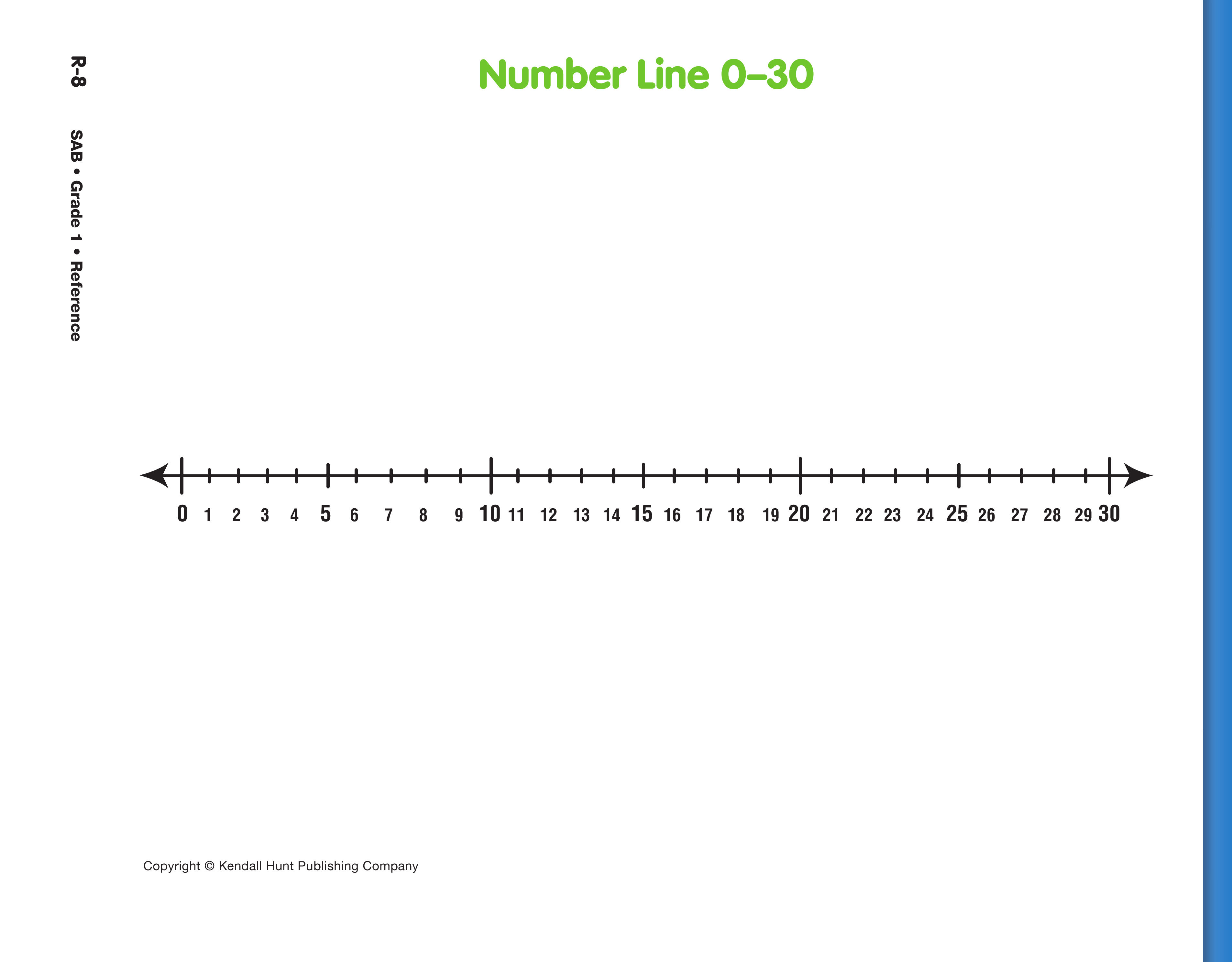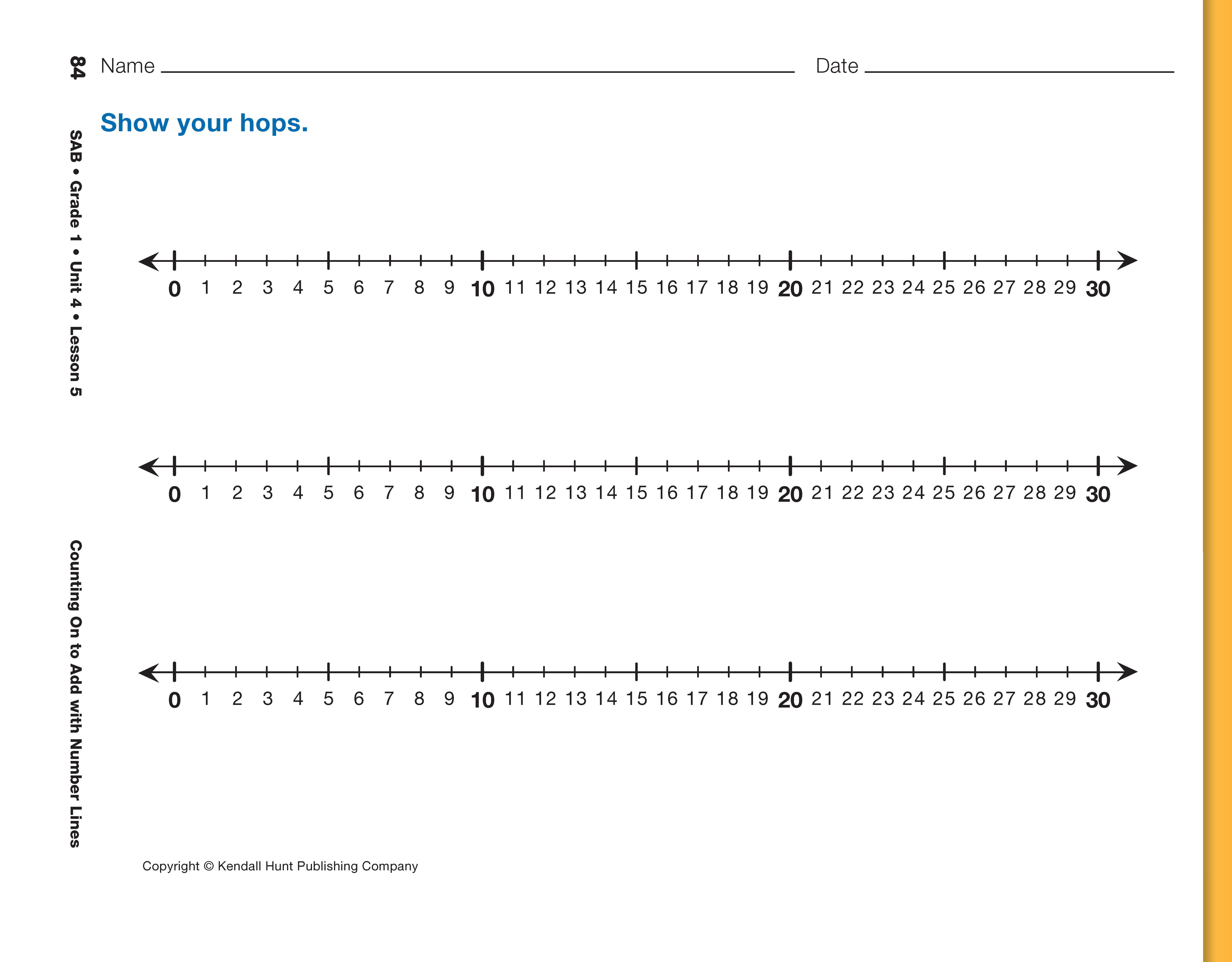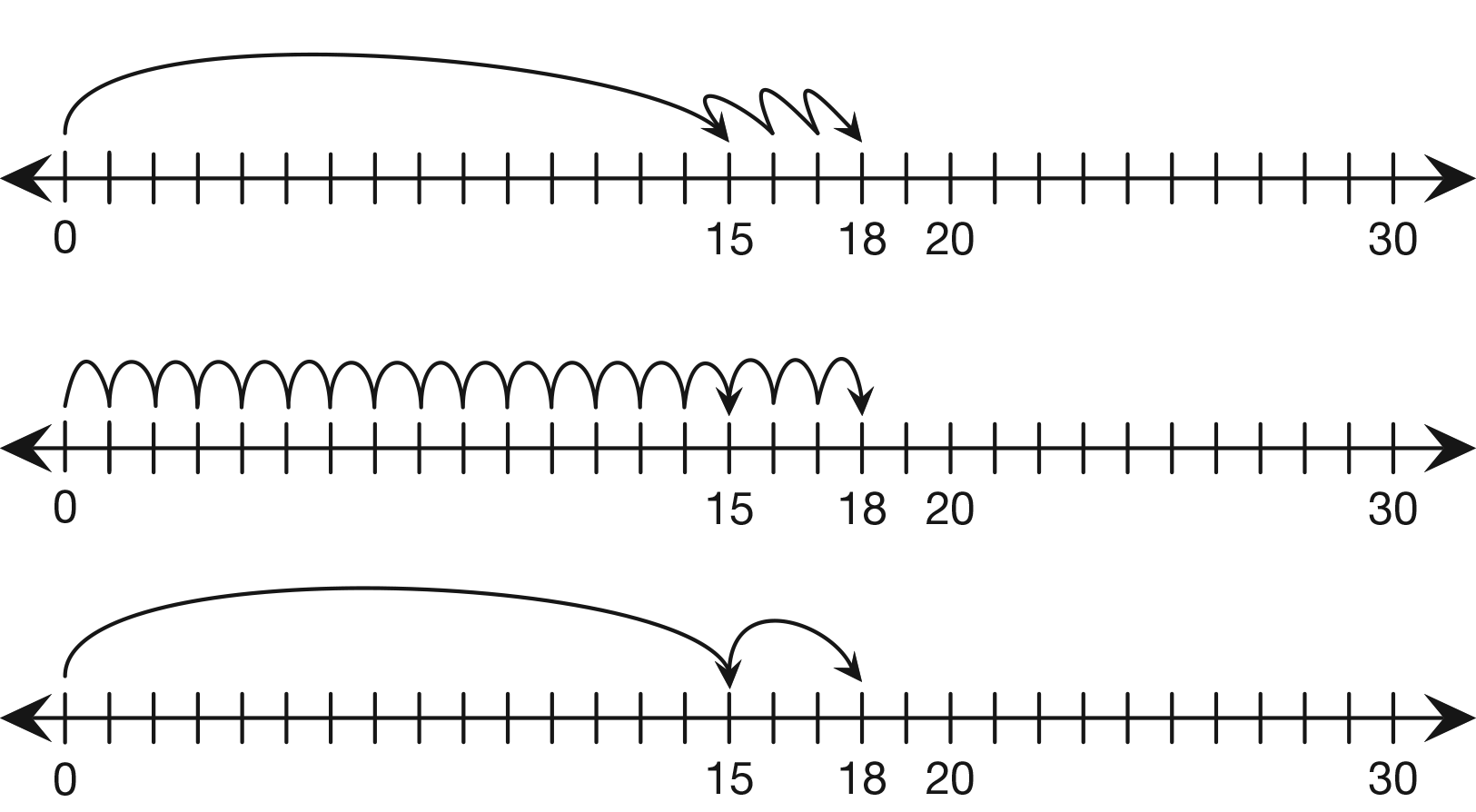Counting On to Add with Number Lines
Est. Class Sessions: 1Developing the Lesson
Use a Calendar to Count On. Display the calendar you prepared prior to the lesson. (See Materials Preparation.)
Share the following story with the class:
Direct students' attention to the calendar. Tell them that Sam mailed a letter on October 7 and that it took one day for it to be delivered to his grandma's house.
Ask:
After students have shared their strategies, remove the self-adhesive note from October 8.
Use a Number Line to Count On. Display and refer students to the Number Line 0–30 page in the Student Activity Book Reference section.
Ask students to think about how to use this tool to show counting-on strategies and solve the following problem:
Several ways to demonstrate counting on using a number line are shown in Figure 2. In the first example, the first addend is shown by one long jump from 0 to 15, then three little hops for each number counted on are shown. This representation most graphically shows the counting-on strategy using the number line. However, some students may be more comfortable with other representations, such as 15 short hops and then 3 more short hops, or one long jump from 0 to 15 and then a medium jump from 15 to 18. All of these representations are correct and should be accepted.
Ask:
Count on one more time, removing the self-adhesive notes as you count aloud together: 16, 17, 18. Restate that the letter was mailed on October 15 and it arrived at Sam's house three days later on October 18.
Choose Tools to Solve Addition Problems.
Use the calendar and the number line display to work through the next problem with the class:
After students have shared their solution strategies, remove the self-adhesive notes from the calendar as you count on aloud together: 21, 22. Give the class additional calendar problems to solve with both the calendar and number line, or ask them create some problems on their own.
Display the It's in the Mail pages. Tell students they are to solve at least two problems using the number lines and at least two using the calendar. They may use connecting cubes to check their work.
Use the display to demonstrate how they can use counters on the page's calendar in place of self-adhesive notes. If they choose, students can put a counter on the date when the letter was mailed and then cover the days that the letter was in transit with more counters. For example, on the first problem, the letter was mailed on the 10th. Cover the 10th with a counter. It took three days, so cover three more dates with counters. Uncover the last date covered with a counter to find the date on which the letter arrived.
Assign the It's in the Mail pages to student pairs. Provide small counters and connecting cubes for students who choose to use them. As students work, circulate about the room and identify a student to demonstrate later in the lesson how to use a calendar and how to use a number line.
















